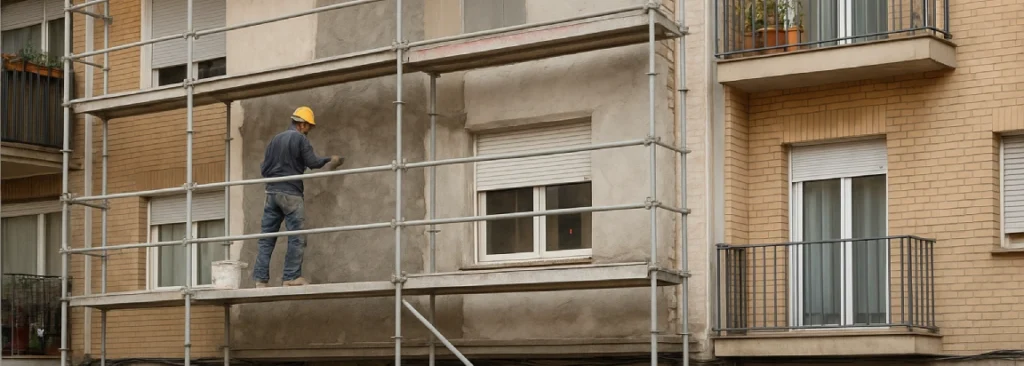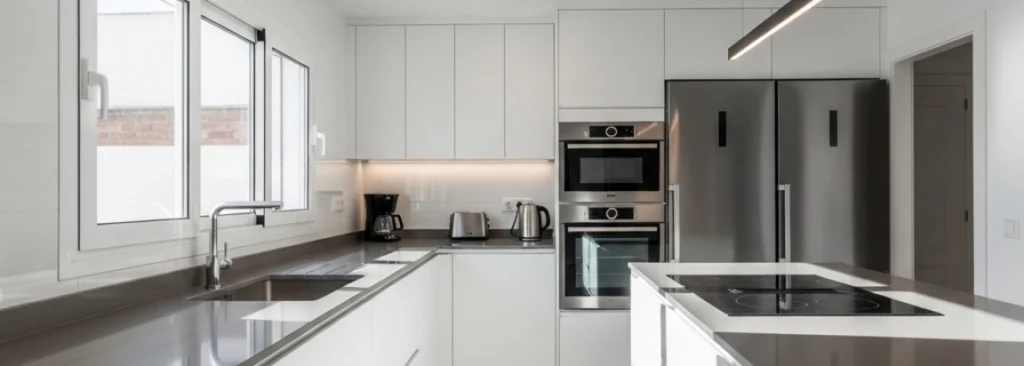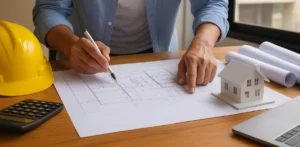Table of Contents
- Introduction: Why it is important to know the reforms that provide tax relief
- What does it mean that a reform provides tax relief in personal income tax?
- Renovations that reduce personal income tax on primary residences
- Renovations in rental housing: allowable deductions
- Amount and limits of deductions for renovation
- Documentation needed to justify the reform
- How to include the reforms that reduce personal income tax in your tax return
- Applicable regulations and legal references
- Common mistakes and recommendations
- Frequently asked questions about reforms and personal income tax
- Conclusion: Reform with fiscal intelligence
- Do you want to make a renovation that provides tax relief on your personal income tax?
Introduction: Why it is important to know the reforms that provide tax relief
Taking advantage of personal income tax deductions is a legal and smart way to reduce your annual tax burden. Many homeowners are unaware that certain renovations to their primary residence or rental properties can qualify for deductions on their income tax return. Knowing what they are, how to apply them, and what documentation you need can lead to significant savings.
In recent years, the Tax Agency has strengthened deductions related to energy efficiency, accessibility, and renovation, aligned with the government's sustainability goals. This guide will help you identify and correctly declare the renovations that qualify for income tax relief.
What does it mean that a reform provides tax relief in personal income tax?
A renovation is tax-deductible when the Treasury allows you to deduct part of the expense incurred on improvements to your primary residence or a rental property. This means you can legally deduct this expense from your taxable income or apply it as a direct deduction to your tax liability.
For a renovation to be deductible, it must meet certain technical, fiscal, and administrative requirements. Not all projects qualify for deductions, so it's crucial to identify those that are expressly recognized by law.
Renovations that reduce personal income tax on primary residences
There are several categories of renovations to primary residences that qualify for personal income tax deductions:
Energy efficiency improvements
These reforms are currently incentivized by tax regulations. Deductions of up to 20% of the cost of projects such as:
- Installation of windows with thermal break
- Replacing boilers with aerothermal systems
- Installation of solar panels or thermal insulation
Energy certificates from before and after the project are completed, demonstrating significant improvements, are required.
Accessibility and adaptation for people with disabilities
If you renovate your primary residence (or that of a disabled family member) to improve accessibility, you may also be able to apply deductions. Examples:
- Elimination of architectural barriers
- Installation of ramps, elevators or home automation systems
These works must meet the technical requirements and be duly justified.
Structural or comprehensive rehabilitation of the property
Renovations affecting structural elements of a building or basic systems such as roofs, facades, or common facilities can be deducted if they improve living conditions, safety, or sustainability.

Renovations in rental housing: allowable deductions
If you own a rental property, the Treasury allows you to deduct certain expenses associated with the maintenance or improvement of the property. Among them, the following are deductible under personal income tax:
Conservation works
- Roof repair, dampness, downpipes or electrical installations
- Replacement of deteriorated elements that do not represent an improvement in value
Facility improvements
- Plumbing, heating or air conditioning renovation
- Improving acoustic or thermal insulation
Conditions required by the Treasury
Renovations must be solely intended to maintain the property in habitable condition, not to expand it or significantly improve its value. Furthermore, they must be justified with invoices, be declared in the tax return, and affect only the rented property.
Amount and limits of deductions for renovation
Tax regulations establish different limits depending on the type of reform:
- Energy efficiency deduction: up to 20% of expenditure (maximum €5,000 per home per year)
- Deduction for accessibility or comprehensive rehabilitation: between 15% and 40% depending on the case
- In rentals: expenses can be deducted as ordinary deductible expenses from the return on real estate capital
These deductions can be applied in one or more fiscal years, provided the work meets the requirements in each year and is documented.
Documentation needed to justify the reform
To include the reforms that reduce personal income tax on your tax return, you'll need to gather and keep the following documents:
- Detailed invoices in the name of the holder making the declaration
- Proof of payment (bank transfers or charges; cash payments are not accepted)
- Energy certificates, in the case of efficiency works
- Building permit or responsible declaration, depending on the type of intervention
- Rental agreement, if the property is rented and you wish to apply the deduction as the owner
How to include the reforms that reduce personal income tax in your tax return
To correctly apply the deduction, you must:
- Access the Tax Agency's Renta Web program
- Find the specific boxes according to the type of deduction. In 2025, energy reforms will be declared in boxes differentiated by type and percentage.
- Include the total deductible amount, keeping supporting documents in case of need.
- If you have any doubts, it is advisable to consult a tax advisor to avoid common mistakes.

Applicable regulations and legal references
These deductions are regulated in:
- Personal Income Tax Law 35/2006 and its updates
- Royal Decree-Law 19/2021, which establishes urgent measures to promote energy rehabilitation
- Annual instructions published by the Tax Agency
You can consult the official guides at the Tax Agency:
Common mistakes and recommendations
Avoid these common mistakes when declaring reforms that reduce personal income tax:
- Confusing improvements with basic non-deductible repairs
- Not keeping valid invoices or bank receipts
- Include works in second homes or parking spaces
- Not checking whether the property is your habitual residence or is legally rented
Frequently asked questions about reforms and personal income tax
Are second home renovations tax deductible?
No, the deductions only apply to the primary residence or declared rented property.
Can I deduct a renovation if I rent the property?
Yes, as long as the rental is declared and the works are for conservation or improvement.
Is any type of invoice acceptable?
No. It must be an official invoice with all the tax information of the sender and recipient, and clearly reflect the concept of the work performed.
Conclusion: Reform with fiscal intelligence
Carrying out renovations that benefit from personal income tax relief is an excellent way to improve your home or rental property while legally reducing your tax burden. The key is to plan ahead, keep all supporting documents, and ensure the work meets the criteria established by the Treasury.
If you're thinking about renovating soon, always consult with a technical and tax advisor. Smart renovations not only improve your quality of life but also optimize your personal finances.
Do you want to make a renovation that provides tax relief on your personal income tax?
Contact us and request your quote without obligation.
We help you plan and execute tax-deductible renovations in accordance with current regulations.
We take care of the technical project, license management, and guide you on how to properly claim tax deductions on your next tax return.
Start your renovation with tax savings and professional guarantees!
In addition, you can learn about all our services here:




